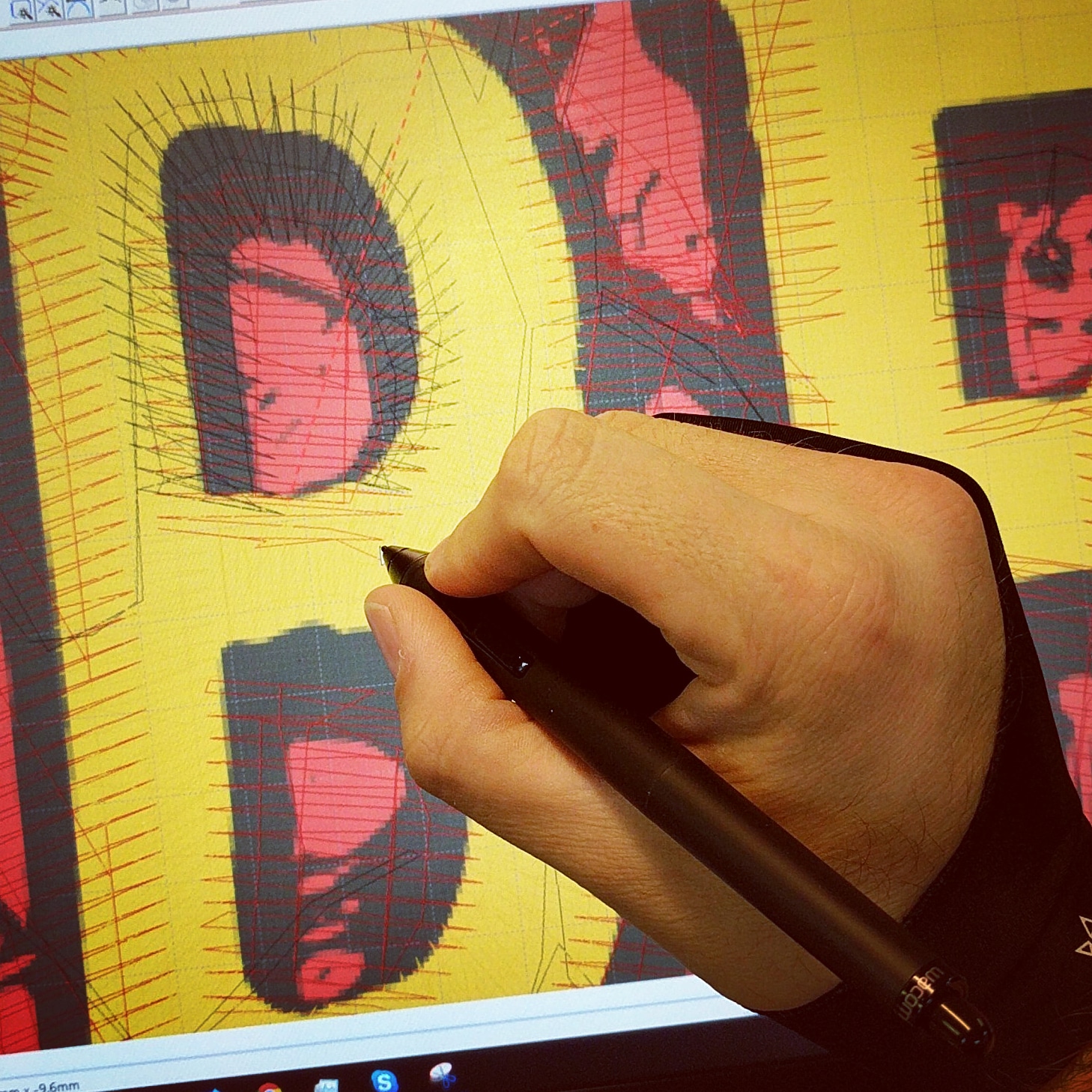Understanding the Embroidery Digitizing Refine: Your Ultimate Overview
Embroidery digitizing is a careful craft that requires precision and know-how to translate complex designs into electronic formats for device needlework. As craftsmens embark on this trip to understand the embroidery digitizing procedure, a detailed understanding of the basics sets the structure for quality.

Understanding Embroidery Digitizing Essentials
Embroidery digitizing basics create the structure whereupon intricate styles are converted right into machine-readable formats for accurate sewing. This initial step in the needlework digitizing procedure is essential for making certain that the final embroidered product is a devoted depiction of the initial design. Understanding embroidery digitizing essentials involves comprehending vital concepts such as stitch types, stitch direction, density, rug, and draw compensation.
Stitch types play an important duty in determining the visual and textural result of the embroidered style. By choosing the ideal stitch type, whether it be satin, fill, or running stitch, digitizers can accomplish the preferred result and enhance the overall quality of the embroidery. Additionally, stitch direction affects the circulation and dimension of the design, while thickness determines the spacing and protection of the stitches.
Additionally, rug stitching supplies stability to the style by protecting the material and avoiding distortion during the embroidery process. Pull settlement is an additional crucial factor to consider to neutralize the natural tendency of fabric to contract when sewn. Understanding these embroidery digitizing essentials is basic for producing professional-quality embroidered products.
Choosing the Right Digitizing Software
Picking the suitable digitizing software program is an essential choice that considerably influences the effectiveness and top quality of the embroidery digitizing procedure. Digitizing for Embroidery. When picking the best digitizing software program, it is vital to consider variables such as the complexity of layouts you plan to produce, the user-friendliness of the software program, the degree of consumer support used, and the compatibility with your needlework machine
There are different digitizing software program options offered in the market, varying from fundamental programs for newbies to advanced software application for specialist digitizers. Some popular choices include Wilcom EmbroideryStudio, Hatch Needlework Software Application, and PulseID. These software supply a large range of devices and attributes to aid you develop detailed layouts easily.
Prior to making a choice, it is suggested to discover the various software program choices via cost-free tests or trials to establish which one ideal matches your demands. In addition, reviewing testimonials and seeking recommendations from experienced digitizers can provide valuable understandings right into the toughness and weaknesses of each click to read more software program bundle (Digitizing for Embroidery). By thoroughly evaluating your demands and contrasting the functions of different digitizing software application, you can make an educated choice that improves your needlework digitizing process
Digitizing Devices and Methods

Optimizing Design Settings for Embroidery
Grasping the details of design settings is basic in attaining optimal cause the embroidery digitizing process, building upon the structure laid by understanding digitizing tools and methods. When enhancing layout settings for embroidery, it is necessary to consider elements such as stitch type, thickness, padding, pull compensation, and enrollment. Sew kind selection affects the total appearance and feel of the style, with choices like satin, fill, and running stitches supplying various structures and impacts. Thickness describes the spacing and density of stitches, impacting the style's protection and durability. Correct padding sewing supplies security and avoids fabric navigate to this website distortion, especially for complex designs or on elastic materials. Draw compensation adjusts for textile stretch during stitching, making sure precise design replication. Enrollment setups line up various components of the style precisely, preserving overall layout stability. By fine-tuning these design setups, embroiderers can boost the high quality and accuracy of their stitched developments.

Troubleshooting Common Digitizing Issues
When encountering common digitizing concerns during the needlework procedure, it is vital to understand the root creates and apply effective options quickly. One common problem is stitch density concerns, where stitches might be as well dense, creating the textile to pucker, or as well sparse, leading to voids in the style. Adjusting the stitch thickness setups in the digitizing software application can aid fix this concern.
Another frequent challenge is string breaks throughout the needlework procedure. This can take place because of different factors such as incorrect tension settings, boring needles, or using low-quality string. Making certain appropriate maintenance of the needlework machine, consisting of normal needle adjustments and tension changes, can decrease the event of thread breaks.
Additionally, layout registration mistakes can lead to misaligned elements within the needlework design. Checking the style placement in the digitizing software program and making essential adjustments before stitching can help in avoiding this issue. read By addressing these common digitizing issues quickly and efficiently, you can guarantee a smoother embroidery process and top notch ended up items.
Verdict
Finally, understanding the needlework digitizing procedure needs a solid understanding of the basics, the right choice of software, and knowledge of devices and strategies. Maximizing style settings and fixing common digitizing issues are crucial steps in making certain high-quality embroidery outcomes. By adhering to these steps vigilantly, one can achieve precision and efficiency in the digitizing procedure.
Comments on “Expert Digitizing for Embroidery: High-Quality Layouts”